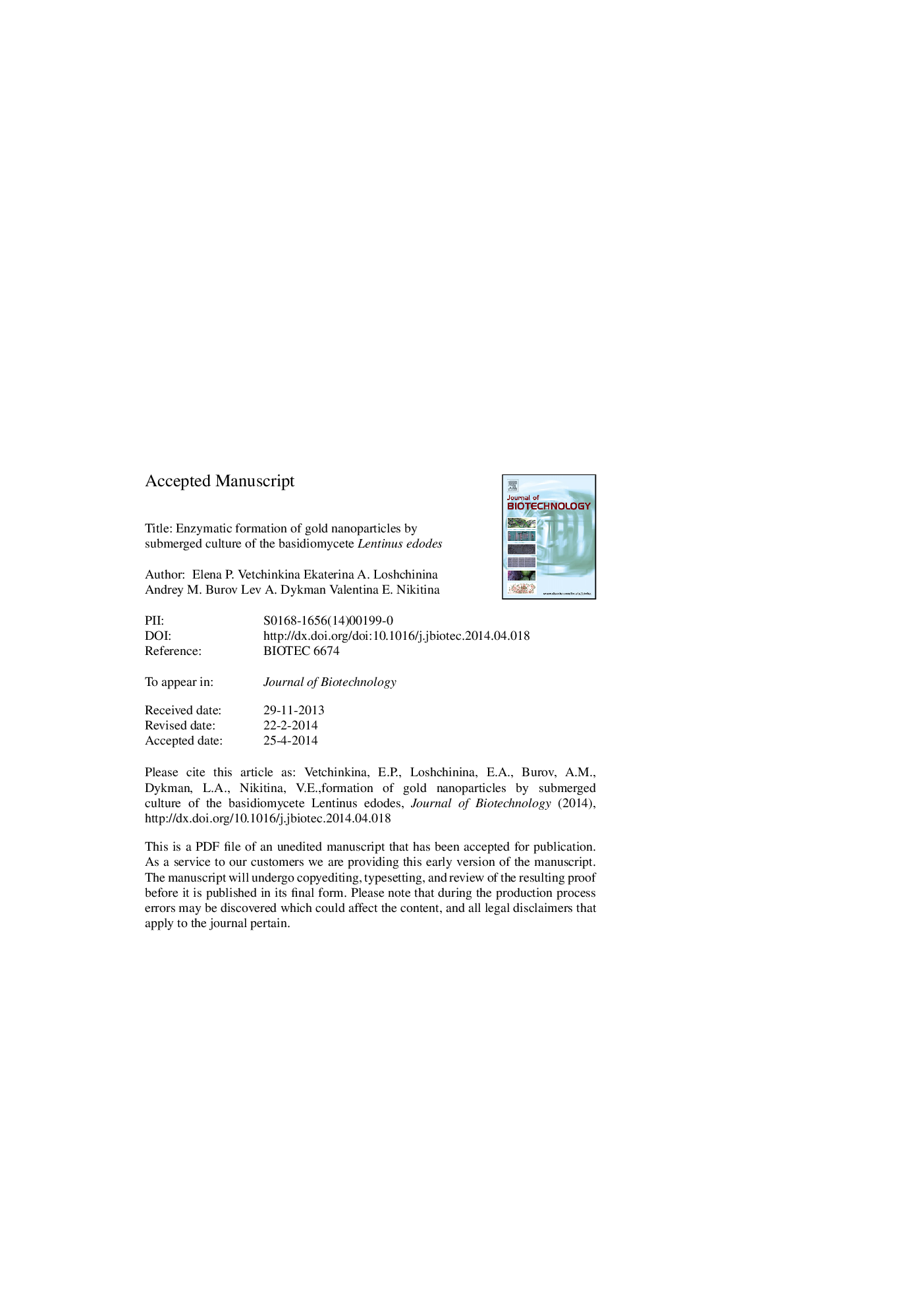| Article ID | Journal | Published Year | Pages | File Type |
|---|---|---|---|---|
| 6491527 | Journal of Biotechnology | 2014 | 36 Pages |
Abstract
We report for the first time that the medicinal basidiomycete Lentinus edodes can reduce Au(III) from chloroauric acid (HAuCl4) to elemental Au [Au(0)], forming nanoparticles. Several methods, including transmission electron microscopy, electron energy loss spectroscopy, X-ray fluorescence, and dynamic light scattering, were used to show that when the fungus was grown submerged, colloidal gold accumulated on the surface of and inside the mycelial hyphae as electron-dense particles mostly spherical in shape, with sizes ranging from 5 to 50Â nm. Homogeneous proteins (the fungal enzymes laccase, tyrosinase, and Mn-peroxidase) were found for the first time to be involved in the reduction of Au(III) to Au(0) from HAuCl4. A possible mechanism forming Au nanoparticles is discussed.
Related Topics
Physical Sciences and Engineering
Chemical Engineering
Bioengineering
Authors
Elena P. Vetchinkina, Ekaterina A. Loshchinina, Andrey M. Burov, Lev A. Dykman, Valentina E. Nikitina,
